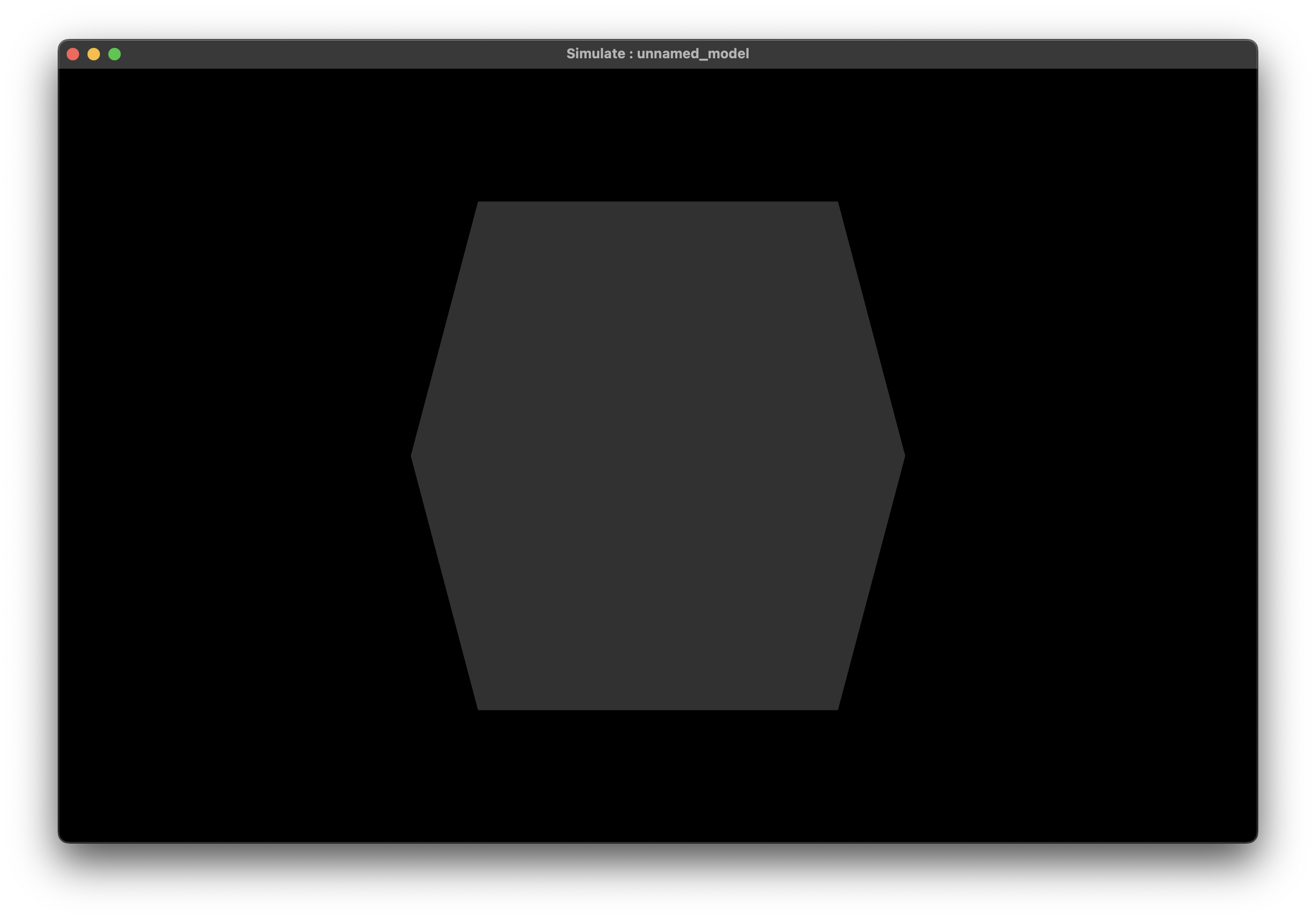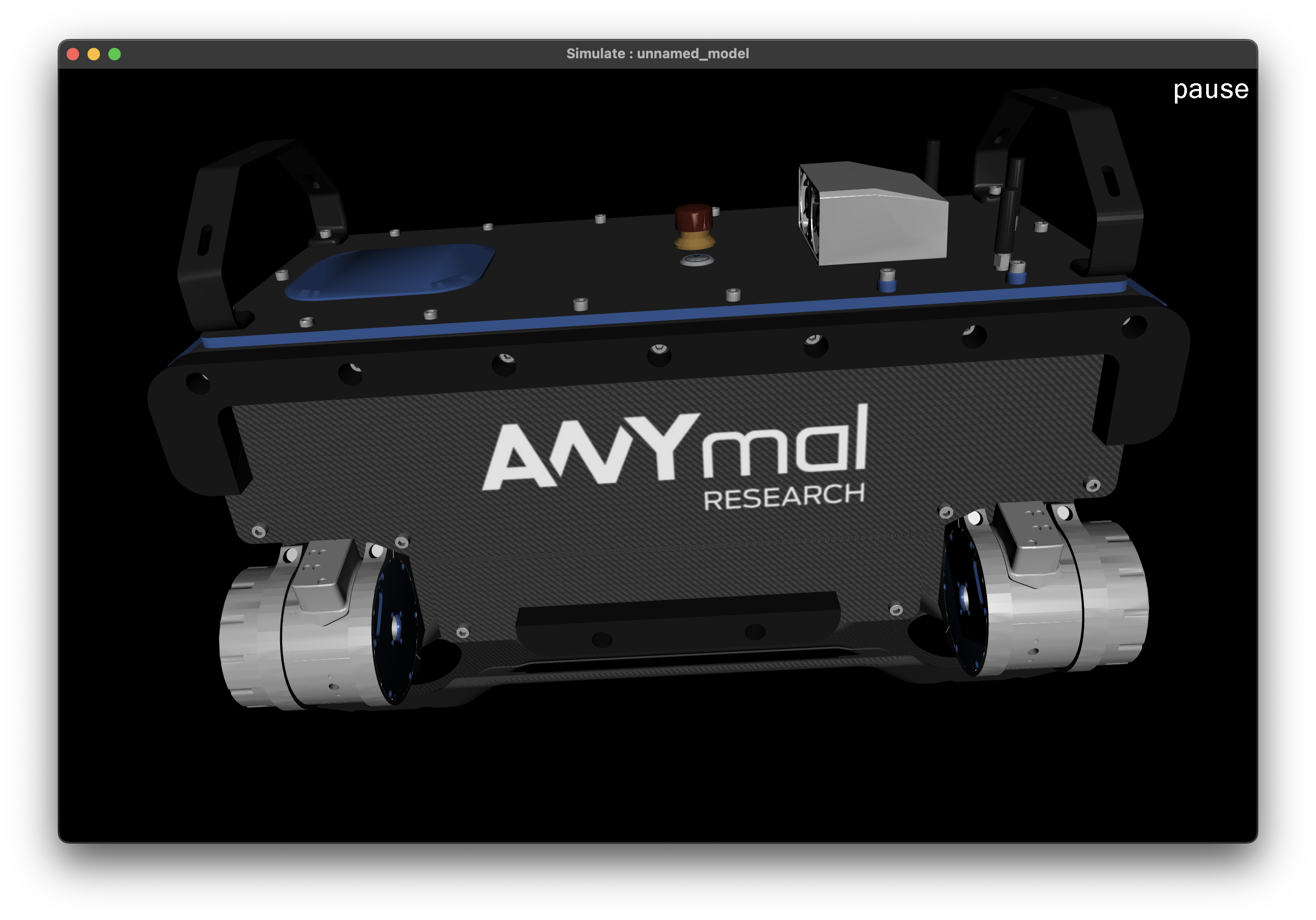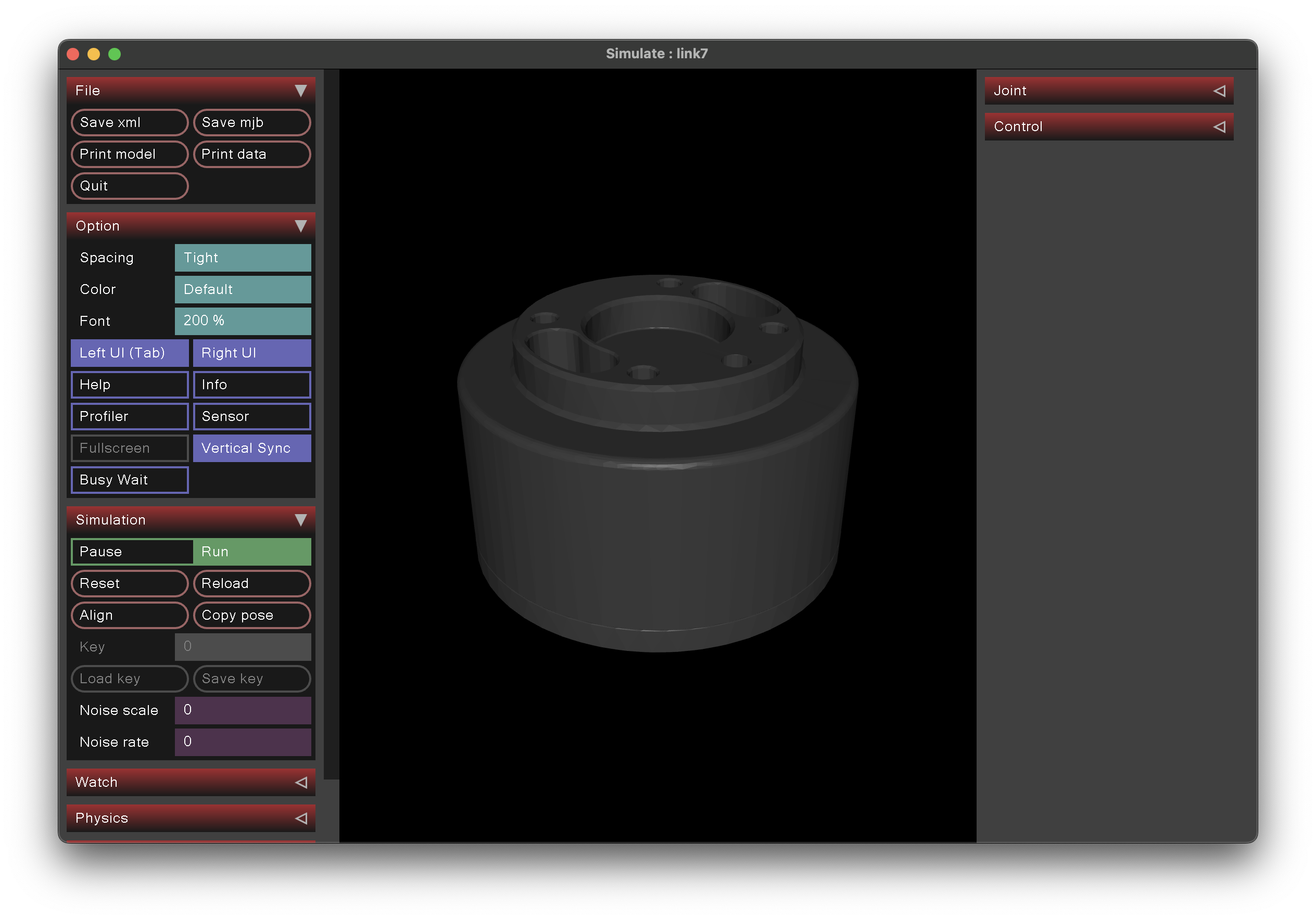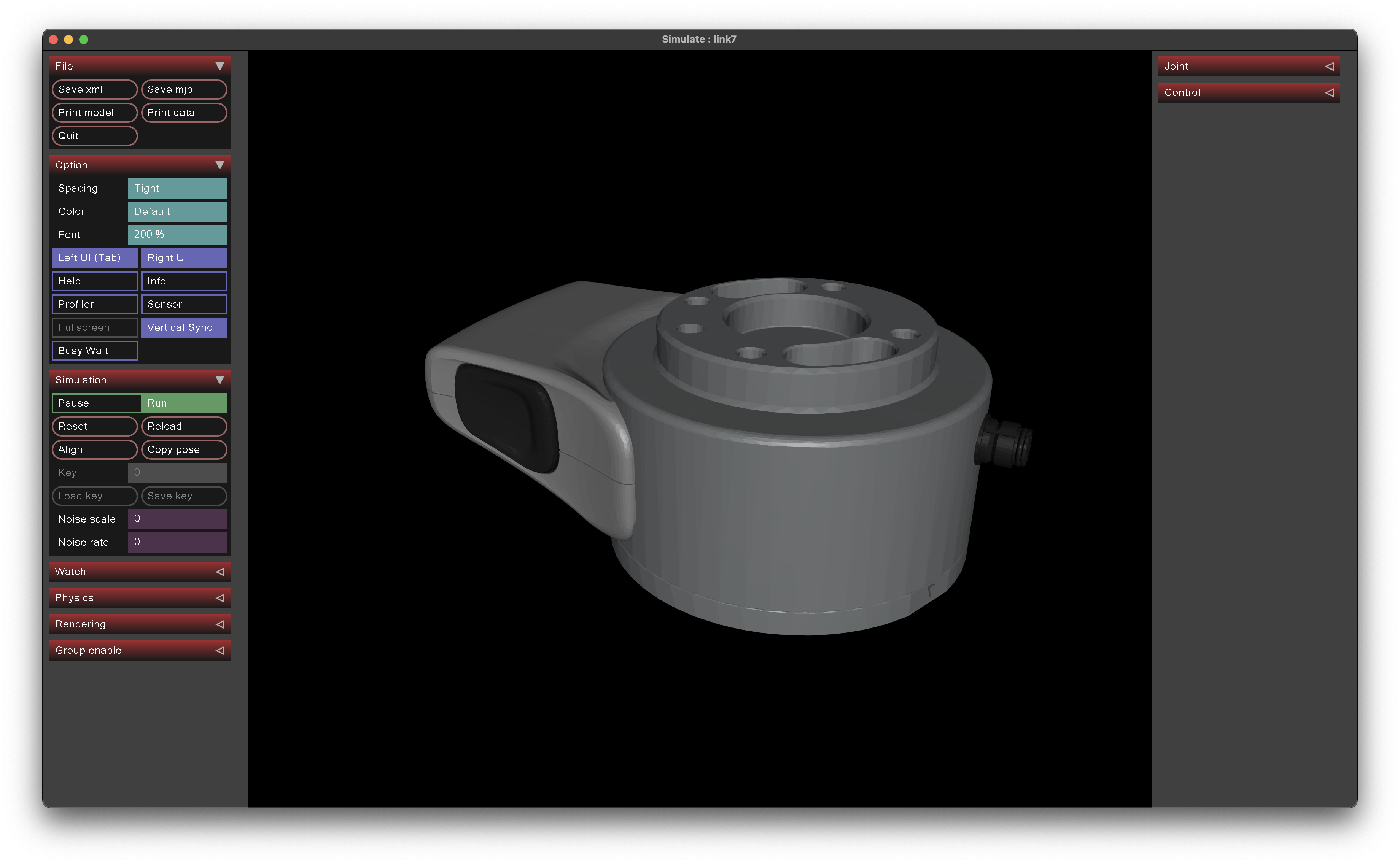obj2mjcf is a CLI for processing composite Wavefront OBJ files into a MuJoCo-conducive format. It automatically:
- Splits an OBJ file into sub-meshes that are grouped by the materials referenced in the OBJ's MTL file
- Creates a collision mesh by performing a convex decomposition of the OBJ with V-HACD
- Generates an MJCF XML file that is pre-filled with materials, meshes and geom elements referencing these OBJ files
The generated meshes can then be used as a drop-in replacement for the original OBJ file. The result is vastly enhanced visuals for your model:
| Before | After |
|---|---|
 |
 |
 |
 |
As of June 2022, MuJoCo does not support composite OBJ files consisting of groups or objects (o or g OBJ tags) and only 1 material can be assigned per mesh. This means that you have to manually split your OBJ file into sub-meshes, a process that is tedious and error-prone. This tool is meant to automate this process.
The recommended way to install this package is via PyPI:
pip install --upgrade obj2mjcfWe recommend installing V-HACD v4.0. If available, obj2mjcf will leverage it to create better collision geometry for your OBJ file.
# For macOS and Linux.
bash install_vhacd.shusage: obj2mjcf [-h] --obj-dir STR [--obj-filter STR] [--save-mtl] [--save-mjcf] [--compile-model] [--verbose] [--vhacd-args.enable]
[--vhacd-args.max-output-convex-hulls INT] [--vhacd-args.voxel-resolution INT] [--vhacd-args.volume-error-percent FLOAT]
[--vhacd-args.max-recursion-depth INT] [--vhacd-args.disable-shrink-wrap] [--vhacd-args.fill-mode {FLOOD,SURFACE,RAYCAST}]
[--vhacd-args.max-hull-vert-count INT] [--vhacd-args.disable-async] [--vhacd-args.min-edge-length INT] [--vhacd-args.split-hull]
[--texture-args.resize-percent FLOAT]
A CLI for processing composite Wavefront OBJ files into a MuJoCo-conducive format.
required arguments:
--obj-dir STR path to a directory containing obj files. All obj files in the directory will be
converted
optional arguments:
-h, --help show this help message and exit
--obj-filter STR only convert obj files matching this regex (default: None)
--save-mtl save the mtl files
--save-mjcf save an example XML (MJCF) file
--compile-model compile the MJCF file to check for errors
--verbose print verbose output
optional vhacd_args arguments:
arguments to pass to V-HACD
--vhacd-args.enable enable convex decomposition using V-HACD
--vhacd-args.max-output-convex-hulls INT
maximum number of output convex hulls (default: 32)
--vhacd-args.voxel-resolution INT
total number of voxels to use (default: 100000)
--vhacd-args.volume-error-percent FLOAT
volume error allowed as a percentage (default: 1.0)
--vhacd-args.max-recursion-depth INT
maximum recursion depth (default: 14)
--vhacd-args.disable-shrink-wrap
do not shrink wrap output to source mesh
--vhacd-args.fill-mode {FLOOD,SURFACE,RAYCAST}
fill mode (default: FLOOD)
--vhacd-args.max-hull-vert-count INT
maximum number of vertices in the output convex hull (default: 64)
--vhacd-args.disable-async
do not run asynchronously
--vhacd-args.min-edge-length INT
minimum size of a voxel edge (default: 2)
--vhacd-args.split-hull
try to find optimal split plane location
optional texture_args arguments:
--texture-args.resize-percent FLOAT
resize the texture to this percentage of the original size (default: 1.0)